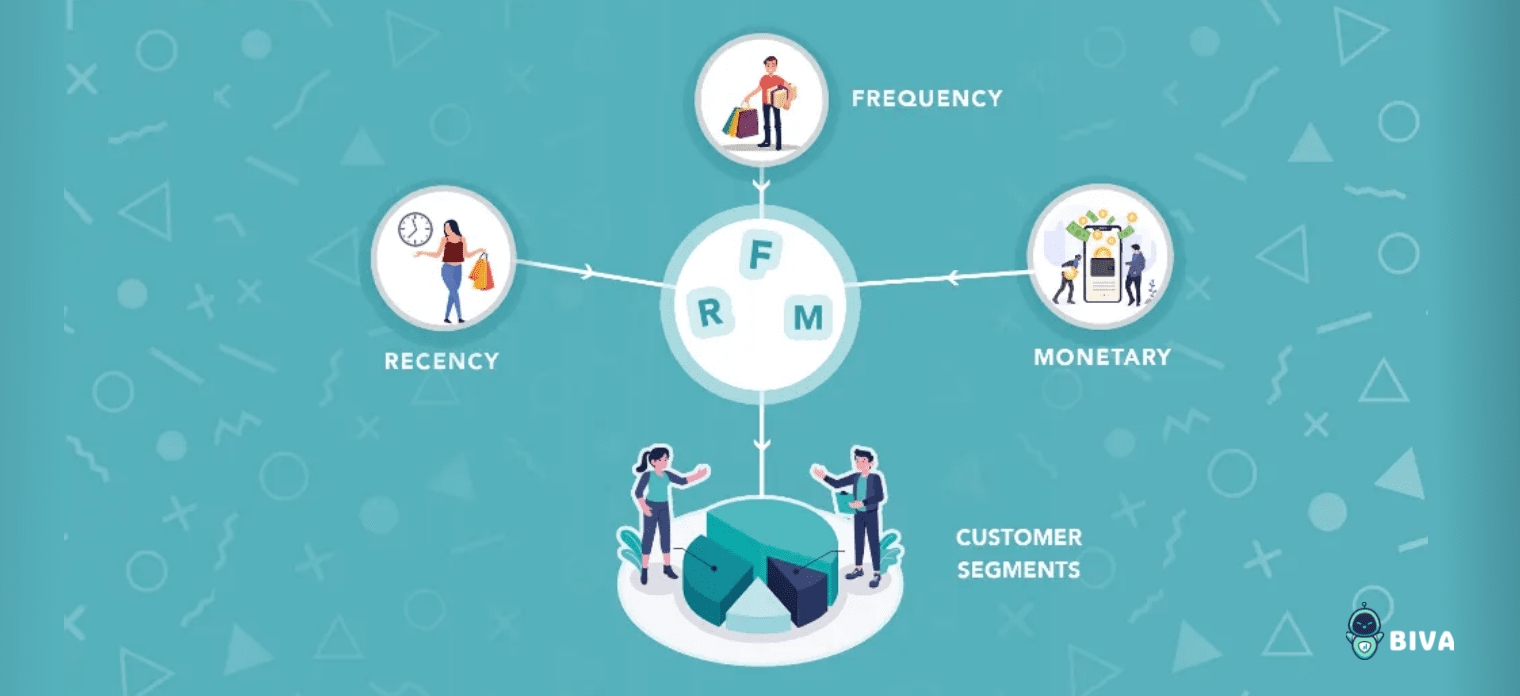

Businesses today are intrigued by questions like who their ideal customers are, who generated the most revenue, who are the ones they lost, who are the new customers, and so on. Answers to these questions help businesses in formulating strategies to realize the full potential of each customer relationship.
In an attempt at figuring it out, businesses swamp customers with multiple messages and communications daily to capture their attention. But it gets exceedingly difficult for the customer to de-clutter the noise and identify the ones which interest them. Hence the attempt does not pay-off.
To make a difference and mean something to the customer, the communication should be truly relevant and timely, which can be achieved by studying the customers’ past behaviour to gauge their taste and preference. This process of identifying the similar traits of customers and grouping them is a typical customer segmentation activity and one such effective method is RFM.
RFM analysis uses three crucial factors for analysing, estimating the value, and doing customer segmentation:
- Recency – the freshness of customer transaction, i.e., time since the last transaction
- Frequency - the frequency of transactions made by a customer, i.e., the total number of transactions, average time between transactions
- Monetary value – the willingness to spend, i.e., total transaction value
RFM method will help in identifying the groups within your customer base who are more likely to react to –a new product launch, sale offers, cross-selling, etc. As the messaging is very much targeted, the response and returns for the marketing efforts will also be high.
Configuration Methodology:
There are multiple ways to configure RFM and one such popular methodology is to divide the entire customer base into 5 equal quintiles, based on the distribution of three parameters: recency, frequency, and monetary values. This will result in 125 different customer segments across those three variables.
The subsequent step is to score customers on a range of 1-5 with 5 being the highest score and 1 being the lowest. For example, a customer who made a purchase recently will be within the quintile where R="5," while a customer who purchased the least number of times in the specified time will be in quintile where F="1."
Key Customer Segments and Suitable Marketing Strategies:
Once marketers have segmented their customer base, they can personalize their marketing strategies as per the traits of each segment. Below are a few segments which marketers can identify using RFM analysis
| Customer Segment Name | Segment Description | Marketing Strategies |
| Ideal Customers (RFM = 555) | These customers have bought most recently, most frequently, and generated the most revenue | Marketers can use loyalty programs and new product launches to keep them engaged. Marketers can also provide value-added offers through product recommendations based on historical purchases. |
| Faithful Customers (RFM = X5X) | These customers purchase the products most frequently | Marketers can retain these customers by creating loyalty programs |
| Customers with the Highest Purchase Value (RFM = XX5) | These customers have generated the highest total revenue and have more willingness to pay | Marketers can focus on increasing Average Order Value (AOV) by motivating customers to purchase luxury products, and by promoting cross/up-sell opportunities. |
| Churned Customers (RFM = 155) | These customers used to be ideal customers in the past and have not made a purchase recently | Marketers can use new product launches, or other retention strategies to get back the lost customers. |
| Promising Customers (RFM = 515) | These customers have just started purchasing products but have high AOV | Marketers can use strategies for first-time buyers such as triggered welcome emails and push notifications (Apps) with rewards to motivate customers for further purchases. |
Limitations of RFM Analysis and Possible Solutions:
Though the combination of RFM values gives good information about customer segments, this model too has some limitations.
Limitation 1:
RFM analysis does not consider customer loyalty which primarily refers to the duration for which the customer is associated with the company. It does not differentiate between the customers having long-term and short term associations. It is essential to consider the length of customer association to identify the most loyal customers of a company.
Solution:
LRFM is the enhanced version of RFM Analysis which considers the length of the customer-company association for effective customer segmentation.
Limitation 2:
RFM analysis does not differentiate between customers purchasing during Promotional & Non-Promotional periods. For instance, if a retailer offers a 10% discount on the first two orders, RFM analysis considers the customer who bought twice on discount equal to the customer who bought at the full price.
Solution:
Marketers can overcome this issue by doing customer segmentation analysis separately for promo and non-promo period.
Limitation 3:
RFM analysis looks at customers’ historical that may or may not be a true representation of their future purchases, preferences, and responses.
Solution:
Marketers can test the behaviour patterns by choosing small samples initially and then extend them to everyone once they are sure to see a similar past pattern to be exhibited.
Conclusion:
In conclusion, customer segmentation using RFM analysis enables marketers to develop effective marketing strategies in a situation where creating a customer-centric experience is of extreme importance. It can help businesses visualize customers differently based on their purchase behaviour and create personalised offers to maximise customer lifetime value.
Related Posts
Marketing Ideas
Product Foundations


